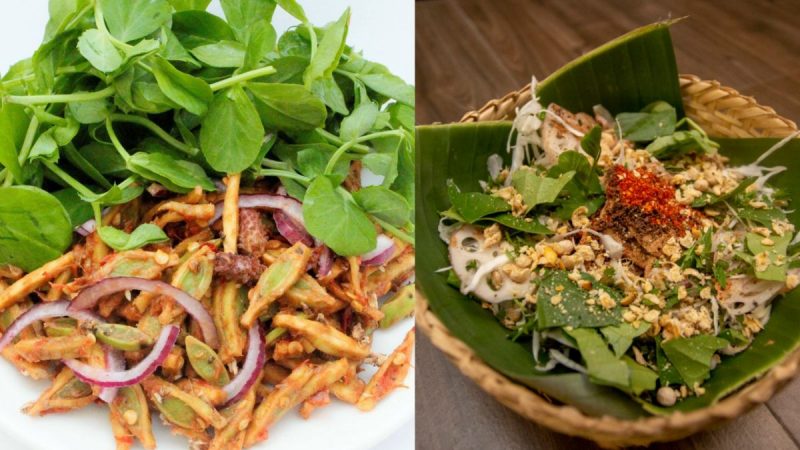In Manipur, there is a culinary gem savoured for generations. It’s a traditional salad that epitomises the essence of Manipuri cuisine and celebrates the freshness of local produce. Called Singju, this dish embodies this philosophy.
Singju, A Dish For All Days
Historically, the Meitei people of Manipur have crafted their cuisine around the natural abundance of their environment. Singju, with its medley of raw vegetables, aromatic herbs, and unique seasonings, is a dish that transcends mere sustenance. The magic of Singju lies in its simplicity and the freshness of its ingredients.
Commonly served as a spicy side dish, most enjoy it as a healthy snack too. Singju has numerous variations due to its major ingredient, seasonal veggies. However, there are two basic types: vegetarian and non-vegetarian. The vegetarian form of this dish finds its presence in rituals. The non-vegetarian version is more popular and includes Ngari, a traditional fermented fish. Ngari imparts a robust, savoury flavour that balances the crispness of the vegetables.
Traditionally, the salad includes finely shredded cabbage, lotus stems, banana flowers, and an array of locally sourced herbs such as cilantro and mint. The crunch of these vegetables is beautifully complemented by the addition of singzu (fermented fish). Additionally, the fish lends a distinctive umami depth to the dish. Moreover, the dish is low in calories and fat, making it an excellent choice for those seeking a healthy, yet satisfying meal.
Also Read: Monsoon On North-East India’s Plate Part 2: Bountiful Harvests From Arunachal Pradesh
The Art Of Preparation
In recent years, Singju has gained recognition beyond Manipur, finding its way into the culinary scenes of other parts of India and even internationally. For its unique flavour profile and farm-to-table philosophy, food enthusiasts and chefs alike are drawn to Singju.
Preparing Singju is a ritual in itself, often involving meticulous slicing and dicing of vegetables to achieve the desired texture. Combine the vegetables and herbs in a large bowl and if required, the ngari. Season the salad with a combination of roasted chickpea flour, which adds a nutty flavour. Add a dash of chilli powder for a hint of heat. Drizzle lemon juice over the salad just before serving, imparting a zesty brightness that elevates the dish. In some variations, roasted sesame seeds are sprinkled on top, which gives a delightful crunch and a subtle nuttiness.
Singju makes it a standout dish that delights the senses and nourishes the body. It’s a delicious reminder of the importance of preserving and celebrating traditional cuisines in an ever-globalizing world.
Cover image credits: Wikimedia Commons

